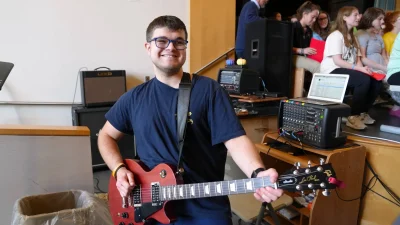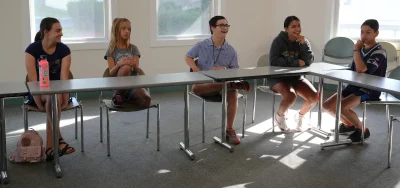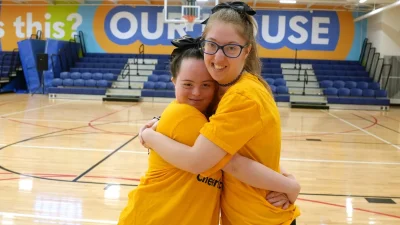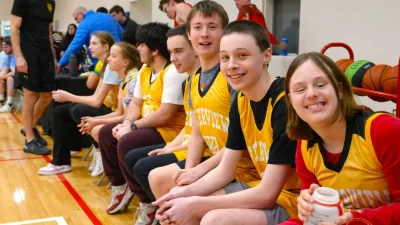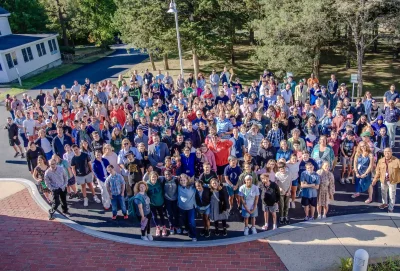Students Learn to Regulate by Understanding and Engaging Their Senses
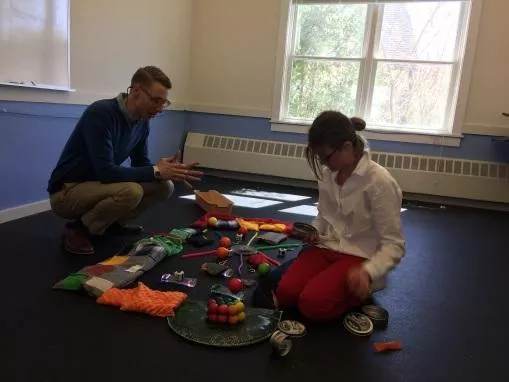
photo above: Advisor, T.J. Cedeno photographed working with student, Cassidy.
We see, hear, smell, taste, and touch…then use the information our brains gather through our senses to live our lives and interpret feelings. Most of us have grown accustomed to this phenomenon without thinking much about how our senses inform our choices or how they help us to regulate our bodies and emotions.
For the many Riverview students who struggle with sensory processing disorder, it is not that simple. Students with sensory processing disorder have trouble receiving and responding to stimuli that comes through their senses. As a result, these students can be over responsive or under responsive to things in their environments. Certain sounds, textures, smells, and tastes make it difficult for some students to participate in seemingly routine activities and tasks of daily living. Some students stim or flail because they need to feel their body in the world around them, known as one’s sense of proprioception or “sixth sense”.
While most of us take sensory integration for granted, Riverview Advisor T.J. Cedeno does not. He continually studies the latest developments in sensory processing and is skilled in helping our students to better understand their emotions. In turn, this engages students’ senses in ways that are helpful and normalizing rather than overstimulating.
When T.J. began working at Riverview, one of the trends he noticed was that when students were having trouble regulating, they often went to “reflection.” At the time, reflection at Riverview was simply a space where students could be separate from a larger group to engage in a quiet task before returning to their classes or activities. T.J. felt that this practice was a missed opportunity for students to explore different strategies which would help to regulate feelings and behaviors in ways that are transferable to real life; an opportunity for greater reflection and self-awareness, as was originally intended.
Wanting to make a difference, T.J. created a “sensory cart” for the School. He presented extensive research on how he felt the cart could be utilized, as well as a plan for moving forward, and his initiative was approved.
The sensory cart that T.J. built contains items that appeal to a broader range of sensory need. Materials include tools that help students to regulate balance and space such as rockers and tension-release bands. Other material including weighted neckties help students to feel “grounded”, fostering a greater sense of self-awareness. Large liquid and sand timers visually engage students, pulling attention from distracting concerns. Beanbags, which T.J.’s partner lovingly sewed for him, are filled with rice and drops of calming essential oils to appeal to students’ sense of smell. White noise machines play soothing sounds to recenter students’ focus on a task at hand. There are tools that interest, and in turn help, students with a wide variety of sensory needs as well as students seeking regulating strategies that are transferable to a life after Riverview.
T.J. says that when he first built the cart he was concerned that people would not use it. That was not the case. “I was pleasantly surprised when I saw that it was checked out 61 times in 4 months”. Students and staff eager to use the cart need only ask T.J. or another advisor for a key to unlock the cart which is kept secure when not in use. Teachers have requested access to the sensory cart for entire classes of students. Advisors utilize the cart most often during individual meetings with their students. T.J. says that he has noticed the middle school and high school students using the cart differently than the GROW transitional program students. “While the middle school and high school students primarily use the cart mid-day to release energy, the GROW students use it more often as a way to calm themselves and take mental breaks,” he says.
One middle school student has found the cart so helpful that they use it every day at around 1:00 p.m. when they feel their medication beginning to wear off. This student particularly enjoys the vibrating tube which provides a soothing grounding sensation. “Increased sensory training has been a game changer for them. When they return to class, they are relaxed and ready to finish out the school day with improved focus and determination,” said Middle School Head Teacher, Torie Murphy.
T.J. is encouraged by these results and the feedback he is receiving from both students and staff. He says that he feels supported by the Riverview community. “One of the great things about Riverview is, if you make a case about something new you want to implement, they will often give you the reigns and let you try. It’s empowering and it feels really good,” he said.
So what does T.J. want to do next at Riverview? “I want to create more sensory carts so that they are accessible to all of the students all of the time. My ultimate goal is to create a large space dedicated to sensory training and mindfulness so that we can share and educate students on the benefits of being self-aware and purposeful in their thinking. A larger space would mean bigger, better programming and material such as sensory-conscious seating, swings, and meditation groups that more students and staff could be involved in.”
The sky’s the limit, T.J.! Thank you for bringing your passion to our team and students. We are grateful for your expertise, and look forward to seeing what else you dream up.
You may also like
-
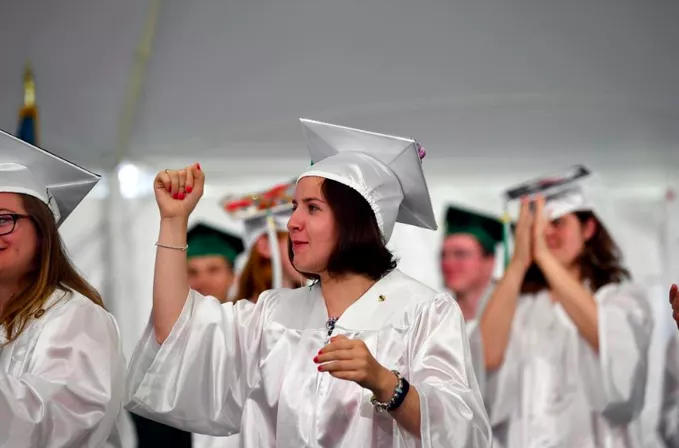
Riverview School Grads Praised for Perseverance
EAST SANDWICH — Anna Sampson, co-president of the 2018 graduating class of Riverview School, invoked Vincent Van Gogh on Sunday…
-
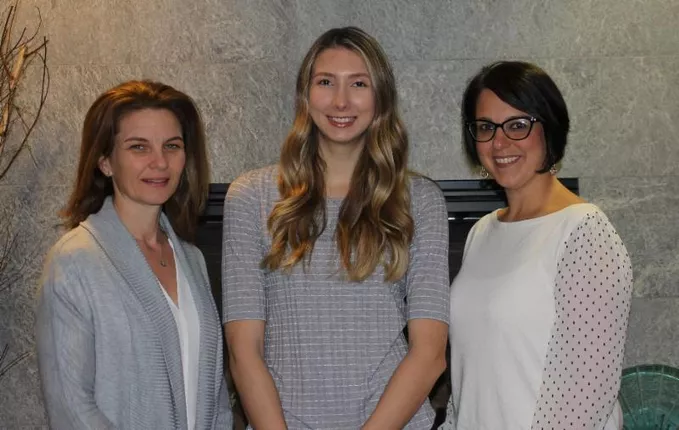
Executive Functioning Skills at Riverview School
DESK BEFORE Executive Functioning Skills are directly taught and reinforced across academic, residential and community settings at Riverview School. This…
-
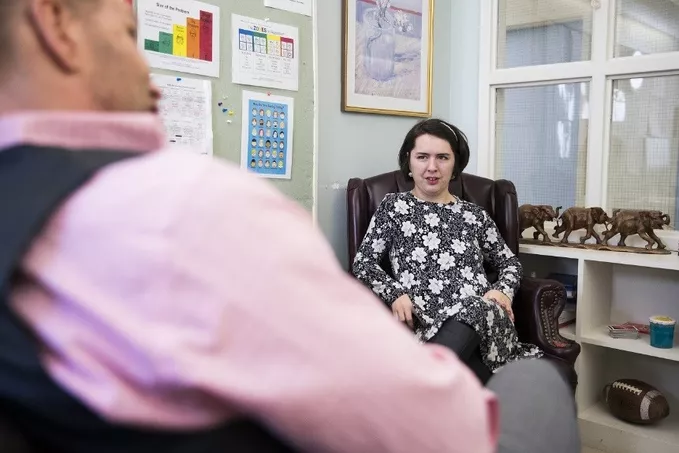
Riverview School’s Advisor Model Sets Students on Path for Social Success and Happiness
Picture Above: Student, Madison Lavoie meets with her Advisor, Dr. Michael Shields at Riverview School While the Riverview Student profile…
